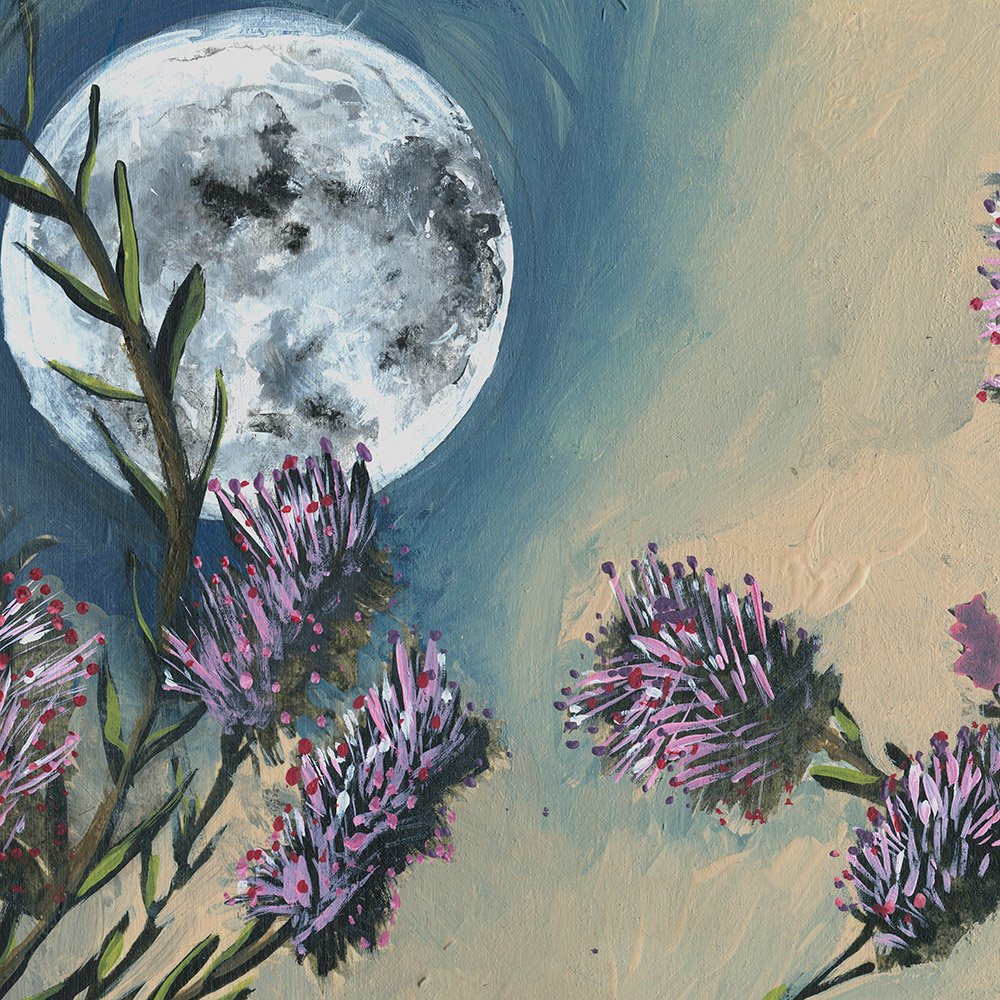 Image 1 of 6
Image 1 of 6

 Image 2 of 6
Image 2 of 6

 Image 3 of 6
Image 3 of 6

 Image 4 of 6
Image 4 of 6

 Image 5 of 6
Image 5 of 6

 Image 6 of 6
Image 6 of 6







Gilberts Potoroo / We Can't Go Back - Original
This painting is a portrait of a native Australian animal known as the Gilbert’s Potoroo that is Critically Endangered with the scientific name of Potorous gilbertii.
Also called a Rat Kangaroo, these small nocturnal marsupials live in small colonies. Their current population is estimated to be 70. They were thought to be extinct but were rediscovered in 1994 (by a scientist who was trying to catch wallabies). They live near Albany and live in patches of dense shrub land on the valley slopes. The Potoroo has two babies a year but only carries one at a time as they can diapause the embryo. The scene depicts a Gilbert's Potoroo eating some truffles beside flowering Melaleuca plants as the moon starts to rise in the sky as they are Nocturnal animals.
This was part of a painted portrait animal series exploring some of the 10,000 species that are extinct or facing extinction. It is titled “We Can’t Go Back”.
The artwork measures 30cm x 40cm x 2cm. It has been painted with acrylic onto a baltic wood panel.
This painting is a portrait of a native Australian animal known as the Gilbert’s Potoroo that is Critically Endangered with the scientific name of Potorous gilbertii.
Also called a Rat Kangaroo, these small nocturnal marsupials live in small colonies. Their current population is estimated to be 70. They were thought to be extinct but were rediscovered in 1994 (by a scientist who was trying to catch wallabies). They live near Albany and live in patches of dense shrub land on the valley slopes. The Potoroo has two babies a year but only carries one at a time as they can diapause the embryo. The scene depicts a Gilbert's Potoroo eating some truffles beside flowering Melaleuca plants as the moon starts to rise in the sky as they are Nocturnal animals.
This was part of a painted portrait animal series exploring some of the 10,000 species that are extinct or facing extinction. It is titled “We Can’t Go Back”.
The artwork measures 30cm x 40cm x 2cm. It has been painted with acrylic onto a baltic wood panel.
This painting is a portrait of a native Australian animal known as the Gilbert’s Potoroo that is Critically Endangered with the scientific name of Potorous gilbertii.
Also called a Rat Kangaroo, these small nocturnal marsupials live in small colonies. Their current population is estimated to be 70. They were thought to be extinct but were rediscovered in 1994 (by a scientist who was trying to catch wallabies). They live near Albany and live in patches of dense shrub land on the valley slopes. The Potoroo has two babies a year but only carries one at a time as they can diapause the embryo. The scene depicts a Gilbert's Potoroo eating some truffles beside flowering Melaleuca plants as the moon starts to rise in the sky as they are Nocturnal animals.
This was part of a painted portrait animal series exploring some of the 10,000 species that are extinct or facing extinction. It is titled “We Can’t Go Back”.
The artwork measures 30cm x 40cm x 2cm. It has been painted with acrylic onto a baltic wood panel.
